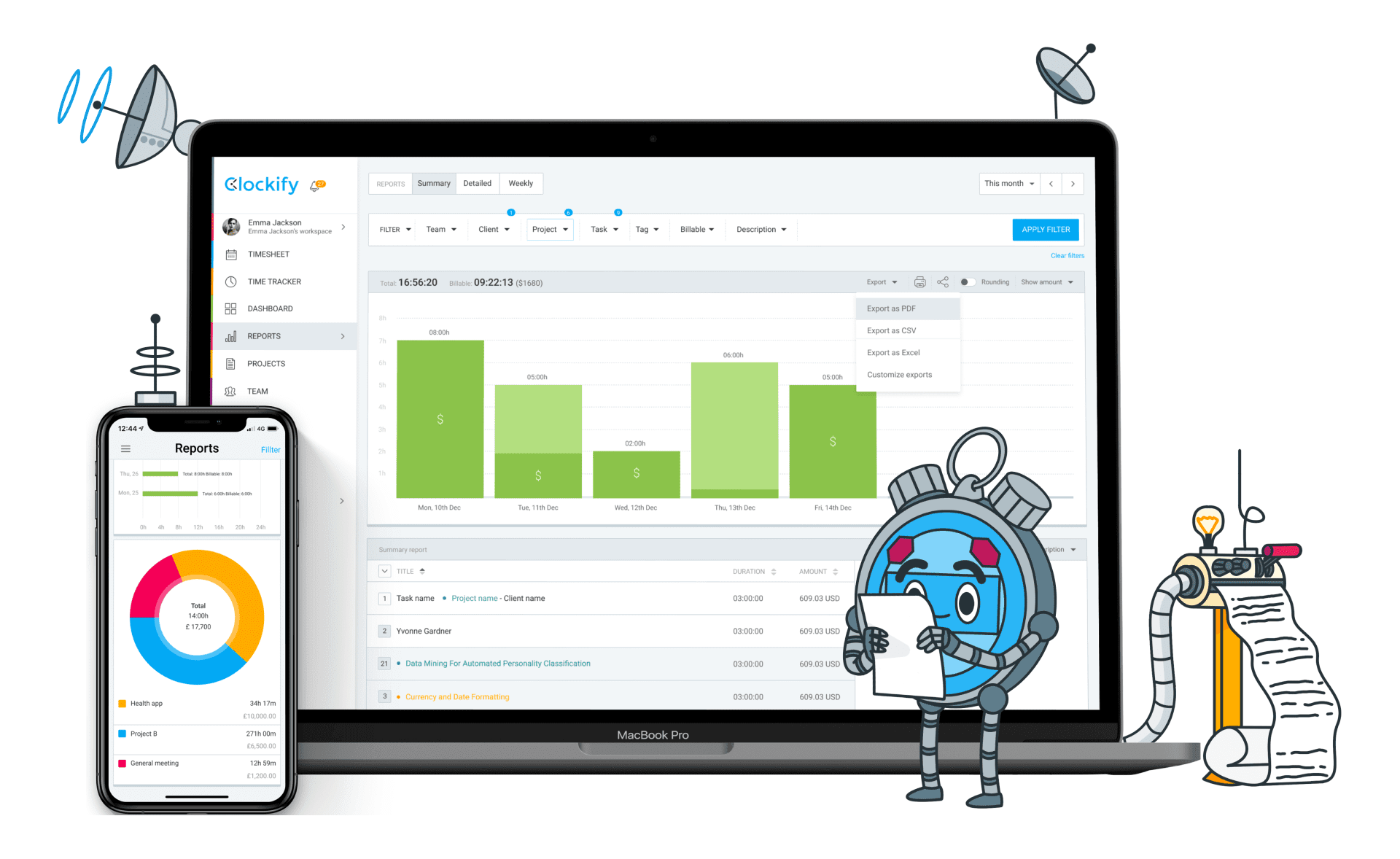
If you are a home or small business owner needing to track billable hours, Clockify might be your answer. Clockify is an online time-tracking tool that lets you track your work hours and monitor your productivity. You can use it to track your time, no matter the activity or the project you’re working on. Whether you’re a freelancer, a remote worker, or manage a team, Clockify will help you stay focused and achieve your goals.
To help you decide which time-tracking tool best suits you, we will quickly compare Clockify with two other tools, pointing out the pros and cons. Then I will do a short video demonstration of Clockify so you can see it yourself.
My viewpoint is that of a home business owner needing to track billable hours for website development. If this is your perspective, I think you will lean toward Clockify, as do I. However, if you work with a team and need to track more than billable hours, such as more complex project management, you may find yourself drawn to one of the other tools.
First, here is a comparison of Clockify with Toggl and Harvest.
Toggl
Clockify and Toggl are both popular time-tracking tools. While both tools share some similarities, they also have some differences that set them apart.
Interface
Regarding user interface and ease of use, both Clockify and Toggl have their strengths. Clockify has a simple and intuitive interface that is easy to navigate, making it an excellent option for beginners or those who prefer a more streamlined experience. Toggl, on the other hand, has a more complex interface with more advanced features, which may take some time to learn but can be more powerful in the long run.
Integrations with Other Tools and Platforms.
Clockify and Toggl offer integrations with various other tools and platforms, making it easy to streamline your workflow and save time. Clockify integrates with popular project management tools such as Asana, Trello, and Basecamp and accounting software like QuickBooks and Xero. Toggl, on the other hand, offers integrations with a broader range of tools, including CRM software like Salesforce, communication tools like Slack and Microsoft Teams, and even social media platforms like Twitter and Facebook. When choosing between the two, consider which integrations are most important to your workflow and which tools you already use.
Time Tracking Features and Functionality.
Clockify and Toggl offer a range of time-tracking features and functionality to help you manage your time more effectively. Clockify allows you to track time by project, task, or client and offers a range of reporting options to help you analyze your data. Toggl, on the other hand, offers more advanced features such as billable rates, team management, and project budgets.
Pricing and Plans.
Regarding pricing, Clockify says it “is the only time tracker free for teams of all sizes. You and your team can use Clockify without ever paying a cent, even if you have hundreds of users! Use it as much as you want, for as long as you want, and we won’t charge a cent.” Toggl also offers free plans for up to 5 users. From there, with an annual plan, Clockify starts at $3.99 per user per month. Toggl starts at $9 per user per month.
Harvest
Clockify and Harvest also have similar features, but some key differences exist. One key difference is pricing. Whereas Clockify and Toggl have free plans, Harvest offers a 30-day free trial. Following the Harvest trial, the cost is $12 per month per user if paid monthly and $10.80 per month per user if paid annually.
If you are a solopreneur, as I am, this pricing difference might make the difference without reading further. As solopreneurs, we are not looking for additional user availability and probably do not need more advanced features. However, there could be a functionality difference that could make the cost difference worth it. So keep reading.
Features and functionalities of Clockify.
Some of the key features of Clockify include time tracking, project management, reporting, and integrations with other tools. With Clockify, users can track time for multiple projects and clients, set hourly rates, and generate reports to analyze their productivity. Clockify offers integrations with popular tools like Trello, Asana, and Slack, making tracking time across different platforms easy.
Features and functionalities of Harvest.
Some of the critical features of Harvest include time tracking, invoicing, project management, and reporting. With Harvest, users can track time for multiple projects and clients, set hourly rates, and generate invoices to bill clients for their work. Clockify offers invoicing, but not in the free version.
Harvest also offers integrations with popular tools like Trello, Asana, and Slack, making tracking time across different platforms easy.
Pros and Cons Of Each Tool
To summarize, we will consider the pros and cons of each time tracking tool.
ClockifyPros:- Clockify is free for teams of any size, making it an ideal solution for small businesses or freelancers with a limited budget.- Clockify offers valuable features like time tracking, task management, invoicing, and reporting. These features make it a versatile tool that can help you streamline multiple processes at once.- Clockify is user-friendly and has a clean interface, making it easy for beginners.- Clockify offers a mobile app that makes tracking time on the go easy.- Clockify supports integrations with tools like Trello, Asana, and Jira.Cons:- Clockify’s free plan has some limitations, which might require upgrading to a free plan.TogglPros:- Toggl offers simple and intuitive time-tracking features, making it an excellent tool for freelancers or individuals seeking an easy-to-use time-tracking solution.- Toggl offers a mobile app, making tracking time on the go easy.- Toggl provides a dashboard and reports that give a detailed overview of the time spent on different projects and tasks.- Toggl supports integrations with popular tools such as Asana, Trello, and Google Calendar.Cons:- Toggl’s pricing plans can be expensive, especially for larger teams or businesses.- Toggl’s reporting feature may not be as detailed as needed for some users.- Toggl doesn’t have a task management feature, which limits its functionality.Harvest:
Pros:
- Harvest offers comprehensive features, including time-tracking, invoicing, and project management.- It has a user-friendly interface that is easy to navigate.- The tool integrates with various third-party applications, such as Trello and Asana.- Harvest provides robust reporting and insight tools that allow users to track their team’s productivity and monitor their progress easily.Cons:
- Harvest can be more expensive than other time-tracking tools, particularly for larger teams.- The interface is more customizable than some users would like, which can be limiting for those who want to track specific information.Video Overview of Clockify
Here is a short video overview of Clockify. Get an introduction without having to register for an account.
Ready to take the next step? Sign up for Clockify:

(We independently select these products — if you buy from one of our links, we may earn a commission.)
Conclusion
Overall, Clockify, Toggl, and Harvest are great tools to consider if you need help tracking time. Each tool has advantages and drawbacks when deciding which is right for your business needs. Whether it's free pricing plans or detailed reporting options, there's something out there to fit everyone’s requirements. With the right research and analysis, we're sure you'll find the perfect time-tracking solution for your team!
https://digitalchowder.com/the-time-tracking-tool-for-increased-productivity/
















